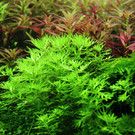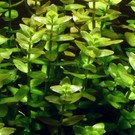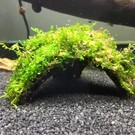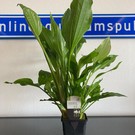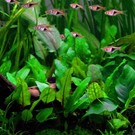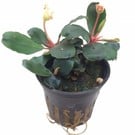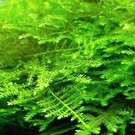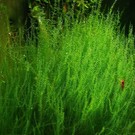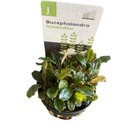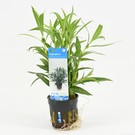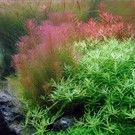Products tagged with planten aquarium
Coconut Bridge with Java moss
Coconut Bridge with Java moss. Java moss is an easy moss to grow and absorbs much waste. Good shelter for (small)shrimp!
Hottonia palustris - In Vitro Cup
€6,75The stem plant Hottonia from Asia and Europe is an unassuming and easy beginner plant. The many curved shoots with fanned and intensely light green leaves quickly create a close group. Each stem becomes 4-6 cm wide and 10-30 cm high.
Juncus repens
Juncus repens is a grass-like marsh plant which also grows strongly under water. In the aquarium, Juncus repens is easy to care for and resilient. Soft water with a good CO2 supply promotes optimum growth. Height: max 25cm.
Bacopa caroliniana - In vitro cup
Bacopa caroliniana originates from US, stems become 10-30 cm long and 3-4 cm wide. Apart from relatively good light it makes few demands.
Half coconut with java moss
Hlaf coconut with Java moss. Java moss is an easy moss to grow and absorbs much waste. Good shelter for (small)shrimp!
Cryptocoryne wendtii 'Green' - In vitro cup
Cryptocoryne wendtii ‘Green' presents beautiful, green leaves and a height from 10-15 cm with a rosette from 8-15 cm wide. When grown in an open space, the leaves will virtually lie on the bottom.
Bucephalandra sp. 'Red' in pot
Bucephalandra sp. 'Red' does best at lower light levels and is very easy to grow. The leaves are of a very dark green or leathery red colour. Size of leaf is 2-4 cm wide, 4-6 cm long and usually it will present wavy edges.
Christmas moss - In vitro cup
Christmas moss (Vesicularia montagnei) is a kind moss which forms many side-branches. This moss is excellent for binding on wood or stone but can also be used loose. 100% safe from an in vitro cup.
Cryptocoryne undulatus 'Broad Leaf' - In vitro cup
This red/Broad Leaf version of Cryptocoryne undulata grows wild in rivers of Sri Lanka. It is an easy plant, tolerant of very different conditions in an aquarium. Appearance of the plant will partially depend on these conditions. Heighth: 15-30cm.
Leptodictyum riparium ´Stringy Moss´ - In vitro cup
€6,75Leptodictyum riparium is a slender, upright moss that tolerates both high and low temperatures. Leptodictyum riparium is often called "stringy moss".
Rotala macrandra - In vitro cup
Rotala macrandra is a wonderful aquarium plant that exhibits a beautiful combination of red and green colors under the right conditions. Gets +- 30 centimeters high.
Cryptocoryne parva
Cryptocoryne parva is the smallest of all Cryptocorynes: only 3-6 cm tall and a roset less than 5-8 cm wide. Very recommendable foreground plant.
Rotala wallichii - In Vitro Cup
Rotala wallichii is a demanding plant that develops red shoot tips in good light conditions. The most decorative effect can be achieved by planting a large number of stems in a group. Heigth: 10-30 cm
Lobelia cardinalis 'Mini' - In vitro cup
Lobelia cardinalis 'Mini' is characterized by its beautiful light green leaves which are closer together than on the original Lobelia, and then it is also significantly smaller, hence the addition ‘Mini’ to the name of the plant.
Cryptocoryne crispatula - In Vitro Cup
Cryptocoryne crispatula var. balansae is from the limestone mountains of Southern Thailand, where the water can be very hard. It is not very demanding, but appreciates a nutritious substrate and good light. Leaves becomes 20-60 cm long and the single rose
Coral moss on mat
Coral Moss (Riccardia Chamedryfolia) is a moss species that produces a lot of small leaves. The leaves of Coral moss grow very close to eachother so the moss gets realy dense. On mat (7x5cm).



